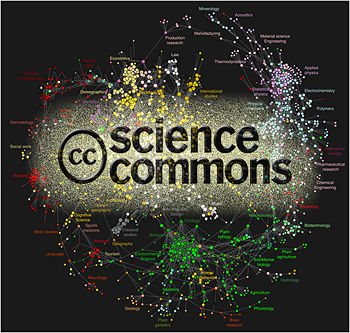Science 2.0

The basic ingredients to Science 2.0: Scientific research shared across disciplines using Web 2.0 tools. In combination with open licenses, this becomes Open Science.
The term Science 2.0 alludes to Web 2.0 — interactive content creation over the internet — and is frequently used as an umbrella term to describe adaptations of the scientific method to the Web 2.0 era of the World Wide Web. Many of these adaptations relate to Open Science, which is aimed at an increased transparency of scientific research, most notably with respect to the handling of data and the publication, in academic journals, of research results derived from those data. As such, movements like Open Data and Open Access — both inspired by the Open Source movement — are considered part of it.
Another important aspect of Science 2.0 leverages or develops Web 2.0 tools and technologies — e.g. blogs, wikis and social networks — for scientific purposes that range from databases to cloud computing to telemedicine. As such, Science 2.0 intertwines with parallel developments in other parts of society, including Library 2.0, Medicine 2.0 and Education 2.0.